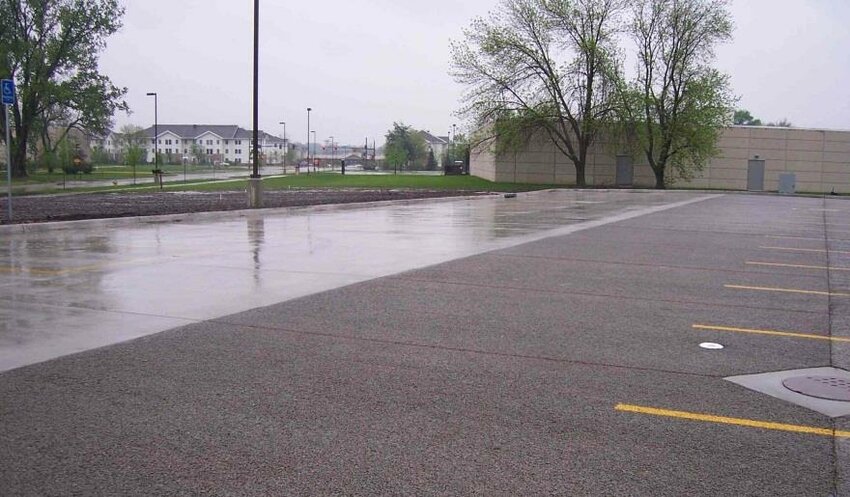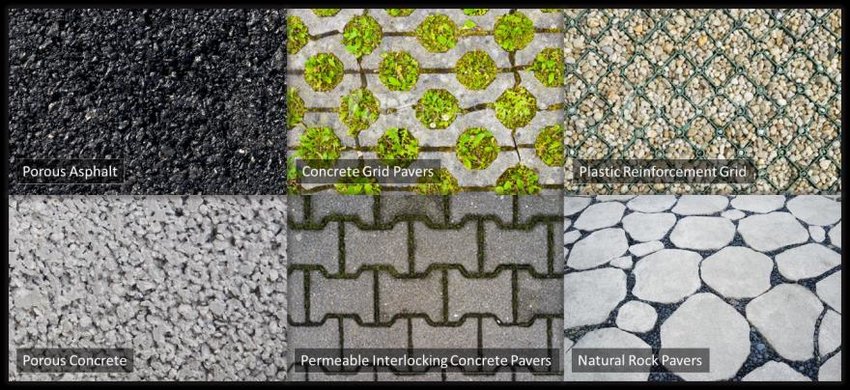Permeable Pavements: Redefining Urban Drainage and Combating Floods
In the face of climate change, urban areas worldwide are grappling with heightened flood risks due to increasingly erratic weather patterns and rising sea levels. Rapid urbanization, characterized by concrete sprawl and reduced green spaces, exacerbates the challenges. One innovative solution to this burgeoning crisis is permeable pavements. Designed to allow passage of water through the surface and into the ground below, these pavements are redefining urban drainage systems and offering hope for cities at risk of flooding.

Understanding Permeable Pavements
Permeable pavements are specifically crafted surfaces that permit water to seep through them, emulating the natural process of ground absorption. Unlike traditional asphalt or concrete that directs rainwater to drains (often overloading urban drainage systems), permeable surfaces absorb the water, replenishing underground water tables and minimizing surface runoff.
Types of Permeable Pavements:
- Porous Asphalt and Concrete: These are much like the regular asphalt or concrete surfaces but with the fine particles omitted, creating tiny voids that let water through.
- Plastic Grids: Often filled with gravel or grass, these grids provide strong surfaces for parking or light vehicle traffic while maximizing permeability.
- Interlocking Pavers: These are solid units but spaced apart, letting water flow through the gaps.

Benefits of Permeable Pavements
1. Flood Reduction:
By allowing rainwater to infiltrate the ground, these pavements mitigate the risk of flooding during heavy rainfall.
By allowing rainwater to infiltrate the ground, these pavements mitigate the risk of flooding during heavy rainfall.
2. Recharge Groundwater:
Water that seeps through permeable pavements can help recharge aquifers, ensuring a steady supply of groundwater for urban areas.
Water that seeps through permeable pavements can help recharge aquifers, ensuring a steady supply of groundwater for urban areas.
3. Pollution Control:
As water permeates the ground, pollutants are naturally filtered out, leading to cleaner groundwater and reduced surface water pollution.
As water permeates the ground, pollutants are naturally filtered out, leading to cleaner groundwater and reduced surface water pollution.
4. Reducing Urban Heat Island Effect:
Permeable pavements, especially those with vegetative grids, can help reduce the heat absorbed by urban surfaces, combating the urban heat island effect.
Permeable pavements, especially those with vegetative grids, can help reduce the heat absorbed by urban surfaces, combating the urban heat island effect.
5. Cost-Effective:
In areas prone to flooding, the cost of damage repairs and drainage infrastructure can be significant. Implementing permeable pavements can be more cost-effective in the long run, reducing the need for extensive drainage systems and flood damage repairs.
In areas prone to flooding, the cost of damage repairs and drainage infrastructure can be significant. Implementing permeable pavements can be more cost-effective in the long run, reducing the need for extensive drainage systems and flood damage repairs.
Implementation Challenges
While the advantages of permeable pavements are clear, several challenges need addressing:
- Maintenance: Over time, the gaps or voids in these pavements can get clogged with debris, reducing permeability. Regular maintenance and cleaning are vital.
- Load-bearing Capacity: Some permeable pavement types might not be suitable for heavy traffic areas, requiring careful planning and selection.
- Initial Costs: Although cost-effective in the long run, the upfront costs of permeable pavements can be higher than traditional alternatives.

A Vision for Sustainable Urban Planning
With the undeniable threat of climate change and its impact on urban regions, cities must embrace innovative solutions like permeable pavements. Their integration into urban landscapes symbolizes a forward-thinking approach to infrastructure, prioritizing sustainability and resilience.
Furthermore, beyond just flood control, permeable pavements align with broader goals of environmental conservation. They address water scarcity through groundwater recharge, reduce pollution by naturally filtering water, and contribute to urban cooling.
In conclusion, as urban planners and civil engineers envision the cities of tomorrow, permeable pavements should be a significant aspect of the blueprint. A harmonious blend of functionality and sustainability, they represent the future of urban infrastructure, combating the growing menace of urban floods.
